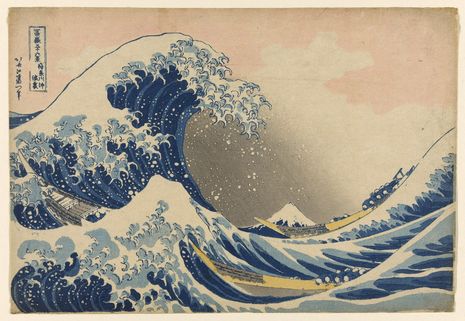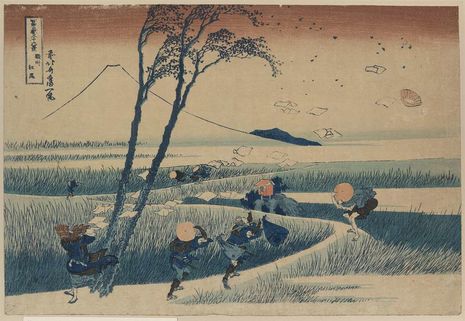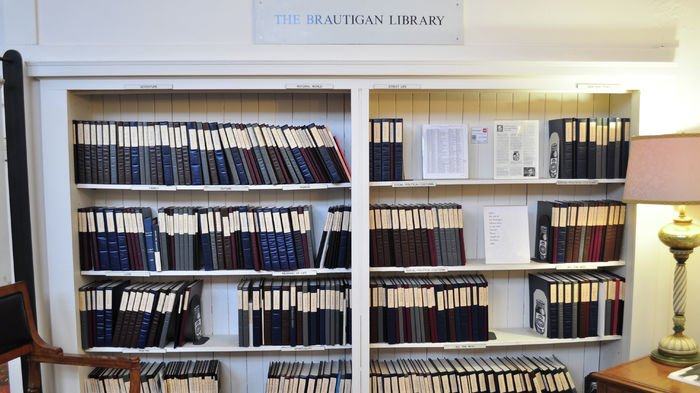Hokusai reimagined as an NFT
Etienne Tracey examines the world of NFTs through the lens of legendary Japanese Edo artist Katsushika Hokusai’s digitalised work

Non-Fungible Tokens (NFTs) have recently hit the world by storm. Online markets such as OpenSea, Rarible, and Nifty Gateway have amassed billions of dollars’ worth of art. From romantic to realist, pop to pixel, impressionist and expressionist pieces have flooded the market, united by one common character—they are all digital.
One marketplace taking a unique approach is La Collection, founded by French businessman Jean-Sébastien Beaucamps and partnered with the British Museum. The platform is exclusive as not just anyone can mint and sell their art; there are no Beeples, Mad Dogs, XCOPYs, CryptoPunks, Lazy Lions, or Bored Apes. Instead, La Collection focuses solely on digitalised unique copies of tangible pieces, partnering with museums and galleries to authenticate the sales of digital copies of real-world pieces. Their first client, though long deceased, is the legendary Japanese Edo artist Katsushika Hokusai.

La collection hosts prices starting from €400 for a ‘common’ piece, meaning 1000 copies are available, to a starting auction of €4000 for an ‘ultra rare’ copy, meaning only one piece is available for public purchase. Gilded in the rare and ultra-rare threshold are all of the Thirty-Six Views of Mount Fuji, Hokusai’s well-known series of Japan’s beloved Mount Fuji. It is fitting, then, that atop this summit sits The Great Wave of Kanagawa, which is an elusive ‘Ultra Rare’ piece. There are only two copies: one is kept by the British Museum and the other is for sale to collectors.
In an analogy unimaginable to the artists of the Edo era, could the raging, endless thrashing of this wave and yet the stability of such a small boat depicted in this image be an expression of itself? A portrait of its own fate—against the modern era of online art, Hokusai rides the waves of Ethereum blockchain in a boat of uncertainty and yet, at least for now, is stable in the face of adversity.
Through an image that is symbolic of change while also depicting the paradox of our eternal mortality, The Great Wave’s newfound immortalisation in digital form seems oddly fitting. Hokusai’s genius portrayal of our ever-morphing world clings to the ebb and flow of current trends, highlighting the diachronic passing of time. Much like the Edo era came and went, Hokusai rises with the hype of NFTs, likely to recede one day and make space for the next big thing. Subsequently, then, we are led to ask—how does art ‘fit in’ this new era of digitalisation?
On the one hand, it is a bizarre concept that if you were to google ‘The Great Wave of Kanagawa’, you would be presented with exactly the same visual representation as those worth hundreds of thousands of dollars on La Collection. On the other hand, this realisation is not very surprising; the development of NFTs has not brought a new niché to trading art but is rather continuing its tradition of exclusivity and elitism.
"Much like the Edo era came and went, Hokusai rises with the hype of NFTs, likely to recede one day and make space for the next big thing"
A luxury good, especially artwork, earns its status through its challenging acquisition. By defining a piece of art as authentic, it becomes unique and therefore valuable in its exclusive nature. Popular recreations of a rare piece will never reach the same value precisely because the original piece is perceived to be imbued with the artist’s creative integrity. In its scarcity, art becomes valuable and therefore desirable as an extravagant symbol of wealth. It’s a simple principle of supply and demand—one where the demand is high yet the supply is singular.
La collection is not a museum in itself. Its users are not there to educate themselves in Japanese woodcutting techniques or admire Hokusai as a bridge between the artistic history of the West and East. Instead, online traffic is generated by people looking to cash in on their own copies of Hokusai’s work. Once bought, your copy is not for display but is hidden in a secure digital ‘wallet’. Like the controversial figures who embarked on world exploration (and subsequent exploitation), many will scour La Collection’s open marketplace for the rare and magnificent Great Wave in order to supplement their own collection. By process of elimination, they become the greatest collector, a mastermind in artistic commercialism, and win a coveted position of ownership.
"A luxury good, especially artwork, earns its status through its challenging acquisition"
A pattern of desire and ownership in art is therefore no different for NFTs. By stamping each piece with a unique digital code authenticated by official sources, as in the case of La Collection, their display and consumption fall to technocratic control with their exclusivity marked by towering prices. The owner of an NFT is prideful in the knowledge that they are only one of 1000, 100, or 10 others with which they share the achievement of ownership. For the lucky (or rich), the fabled ‘ultra-rare’ prize, Hokusai’s greatest accomplishments, become their own and no one else’s. Ironically then, La Collections partnership with public institutes is promoting private collections.
What Hokusai would have to say on the matter we cannot possibly know for sure. In an era of unstoppable change, Hokusai looked to an immovable object. Mount Fuji still stands today, and its valiant message of continuity and strength reflected by Hokusai can now be found etched not on woodblock but in digital code.
While NFTs mark a new age of artistic representation, audiences remain unchanged. Critics, collectors, and now technocrats ensure art—whether physical or digital—remains sacred and therefore exclusive and elite.
 News / SU reluctantly registers controversial women’s soc18 December 2025
News / SU reluctantly registers controversial women’s soc18 December 2025 News / CUP announces funding scheme for under-represented academics19 December 2025
News / CUP announces funding scheme for under-represented academics19 December 2025 Features / Should I stay or should I go? Cambridge students and alumni reflect on how their memories stay with them15 December 2025
Features / Should I stay or should I go? Cambridge students and alumni reflect on how their memories stay with them15 December 2025 Fashion / The art of the formal outfit 18 December 2025
Fashion / The art of the formal outfit 18 December 2025 News / Dons warn PM about Vet School closure16 December 2025
News / Dons warn PM about Vet School closure16 December 2025










